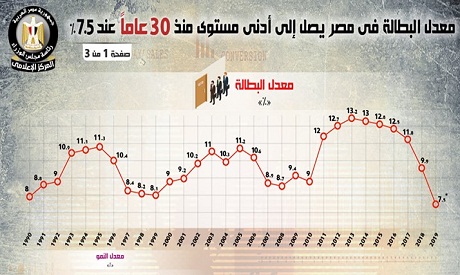Egypt’s unemployment rate rose 7.8 percent during the third quarter of the year from 7.5 percent during the second quarter of 2019, the state-owned statistics agency CAPMAS said on Thursday.
The unemployment rate dropped 2.2 percent in the third quarter of 2019, the statement added.
According to CAPMAS, about 2.2 million Egyptians are currently unemployed, nearly divided equally between males and females. Some 77.8 percent of the unemployed are between 15 and 29 years old.
The labour force was estimated at 28.406 million, up from 28.069 million during the second quarter of 2019, with an increase of 1.2 percent. The urban labour force reached 12.381 million, and the rural work force recorded 16.025 million.
The unemployment rate in urban areas rose to 10.6 percent out of the total work force, up from 9.3 percent in the second quarter of 2019, and 12.5 percent during the third quarter of 2018, with a decrease of 1.9 percent.
The unemployment rate in the countryside fell to 5.6 percent of the total labour force, down from 6.1 percent in the second quarter of 2019 , and 8.1 percent in the third quarter of 2018.
President Abdel Fattah al-Sisi pledged to reduce unemployment during his tenure by attracting private sector and foreign investments to boost the economy.
In recent years, the government has spent billions of dollars on mega projects, such as the new electric power stations, the New Suez Canal, networks of highways and the New Administrative Capital, which provided employment to tens of thousands of Egyptians.
Since 2014, the government has been implementing a set of economic reforms to lower the budget deficit, including floating the local currency, cutting energy subsidies and putting in place a value-added tax.
Egypt’s cabinet media centre announced in October that unemployment reached the lowest rate in 30 years with 7.5 percent in the second quarter of 2019, down from 9.9 percent a year earlier.
The drop was the result of a set of factors, including the implementation of 9,039 state projects from July 2014 to December 2018, at a total cost of 2.1 trillion pounds, the centre said in an infograph posted on its official website.

Source: Ahram Online



